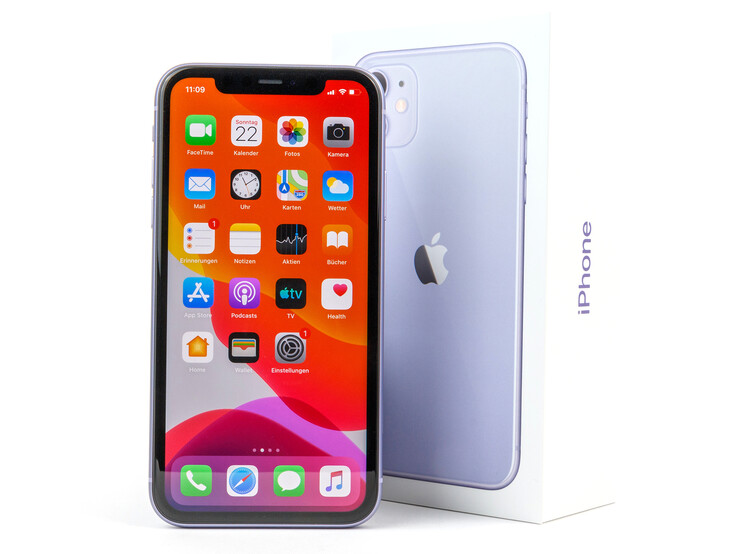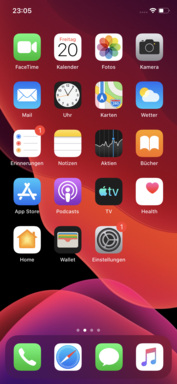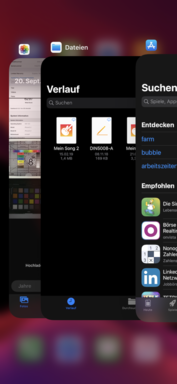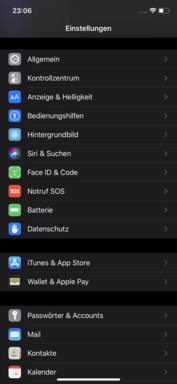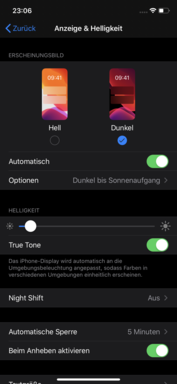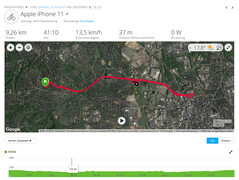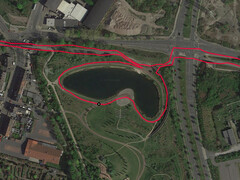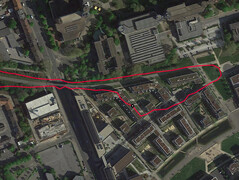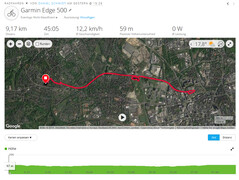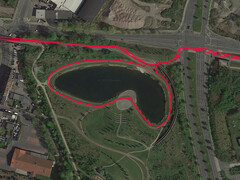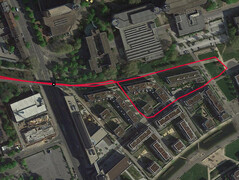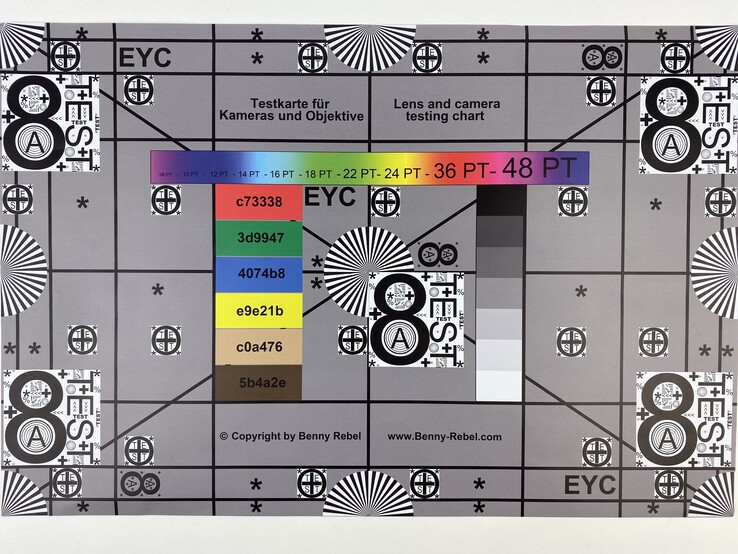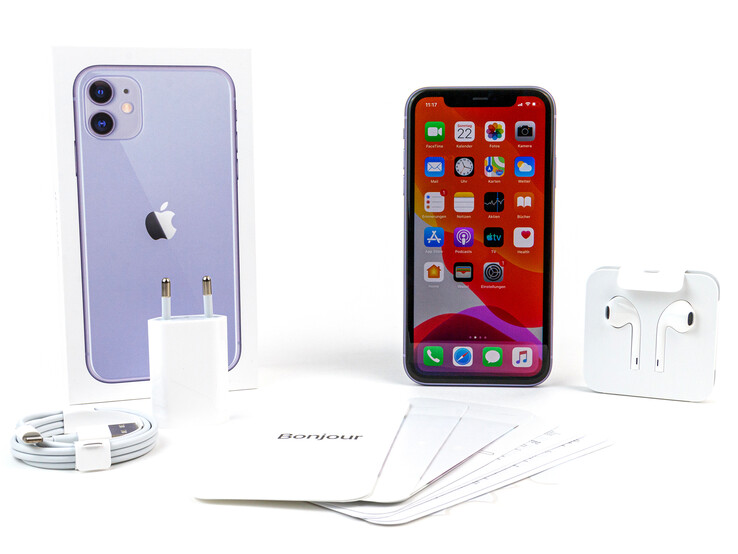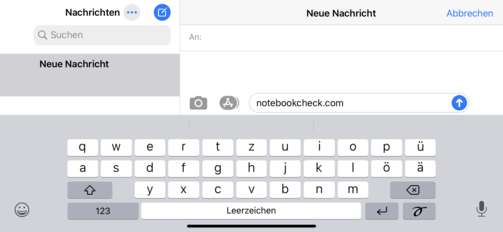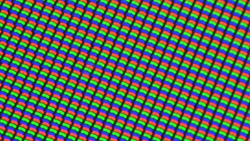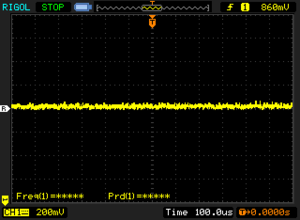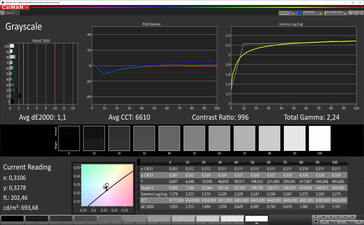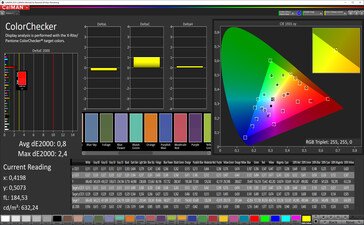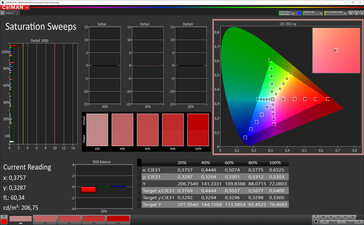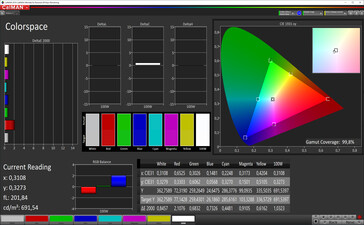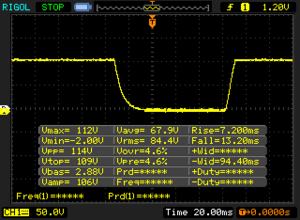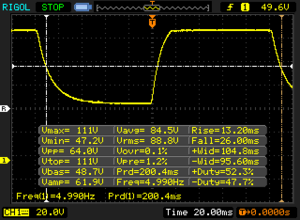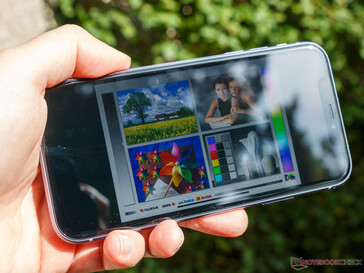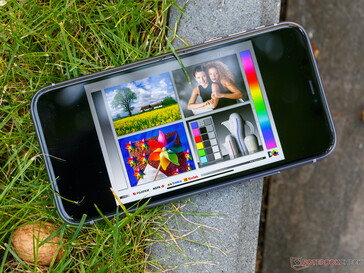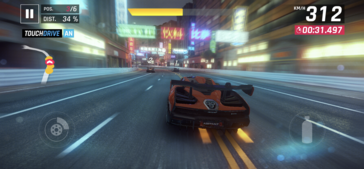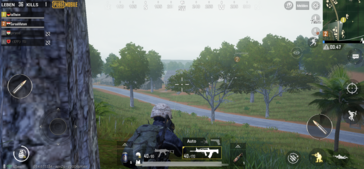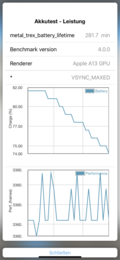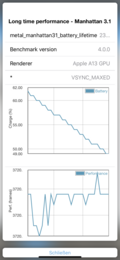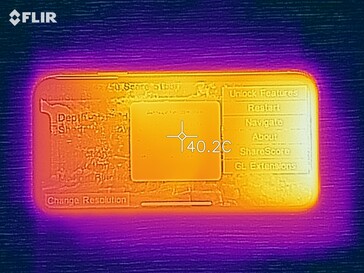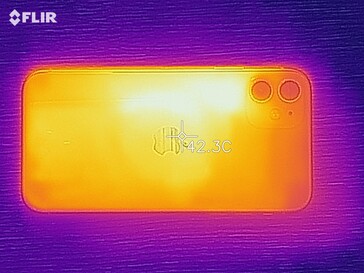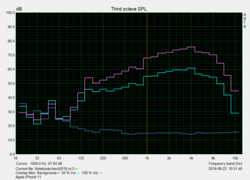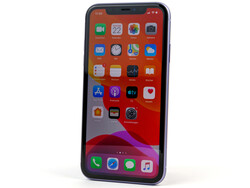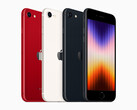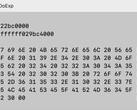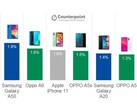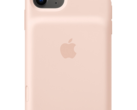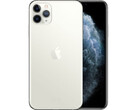Apple iPhone 11 Smartphone Review: More than just an affordable Apple smartphone
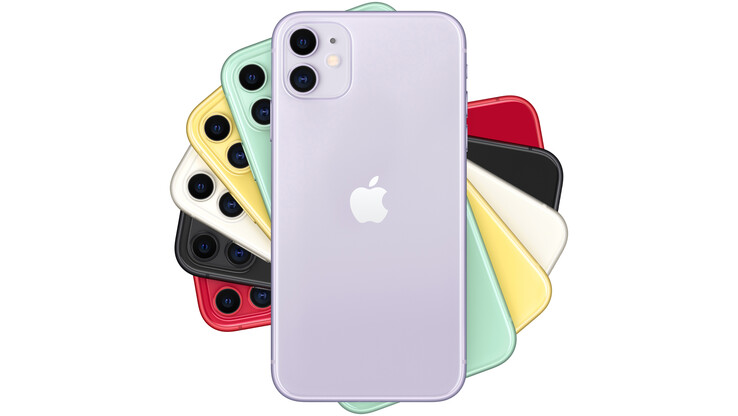
The Apple iPhone 11 is this year's cheapest iPhone, with it effectively succeeding the iPhone XR. Both smartphones share identical dimensions, but Apple has added a few new colour options, dual rear-facing cameras that include an ultra-wide-angle sensor, and a larger battery too.
Its display continues to measure 6.1-inches though and remains a Liquid Retina HD panel too. Apple protects the display with ionised glass as well. As its name suggests, the panel is still HD, a talking point of last year's iPhone XR. However, Apple has equipped the iPhone 11 with an A13 Bionic SoC and 4 GB of RAM just like it has with its more expensive siblings. On the other hand, the company has not made a 512-GB storage variant available. Instead, the 64, 128 and 256 GB options of last year return, which cost US$699, US$749 and US$849, respectively.
Our review will focus on not only the new dual rear-facing cameras but also the larger battery, the improved waterproofing and the inclusion of a WiFi 6 modem. We shall compare the iPhone 11 against the LG G8s ThinQ, Huawei P30, Samsung Galaxy S10e and Xiaomi Mi 9 among others too.
- 09.30.2019: Live Review completed.
- 09.27.2019: Communication & GPS, Telephony, Gaming and Temperature sections added.
- 09.26.2019: Update: Display section completed. Performance section expanded. Initial battery tests added.
- 09.23.2019: Display measurements and additional photos added.
- 09.22.2019: Initial benchmarks and photos added.
- 09.20.2019: Live review started.
Case - New colours for a new iPhone
The iPhone 11 is made of glass and aluminium, the former of which is identical to that found in the iPhone 11 Pro series. However, whereas the latter has a matte finish, Apple has opted for a gloss finish with the iPhone 11 that picks up fingerprints more easily. These can, of course, be wiped off, but they will quickly reappear.
As we mentioned earlier, the iPhone 11 shares its dimensions with the iPhone XR. Our review unit is built well, with all gaps between materials being even and tight. The device is sturdy too, and the physical buttons fit perfectly within their housings. Applying heavy pressure to the LCD panel causes it to temporarily deform though, which looks akin to a wave formation.
Apple currently offers the iPhone 11 in Black, Green, (PRODUCT)RED, Purple, White and Yellow. The SIM card tray matches the colour of the frame and is also made of aluminium, for reference. It also sits flush with the frame too, allowing the device to be IP68-certified against the ingress of dust and liquids. Apple claims that the device can be submerged in up to two metres of liquid for up to 30 minutes too. Similarly, it should withstand having drinks spilt on it, along with conventional tap or bottled water.
Connectivity - Always with Lightning, Apple
Not a lot has changed with connectivity from the iPhone XR to the iPhone 11. The Lightning port makes a return, contrary to what some people expected or hoped for, with Apple deciding against switching to USB Type-C as it has with its latest iPad Pros.
The iPhone 11 supports Bluetooth 5.0 too and has an NFC chip on board, although Apple still restricts it to read mode, effectively limiting it to only a few uses including Apple Pay. One new feature is the so-called ultra-wideband chip, which gives the iPhone 11 spatial awareness of sorts. Apple has not yet confirmed what the chip does, but we may shortly see the company properly implementing it within iOS 13.
Face ID returns too, as does eSIM functionality. Effectively, the iPhone 11 is a dual SIM smartphone.
Software - iOS 13, a speedier and darker upgrade
The iPhone 11 ships with iOS 13, just like its more expensive siblings. Apple will bring the software update to every iPhone back to the iPhone SE and iPhone 6S too. The focus of iOS 13 is performance improvements, with Apple reducing the file sizes of its preinstalled apps, among other things, to make the OS feel snappier than iOS 12. iOS 13 includes Face ID improvements too, which Apple promises should allow all compatible devices to be unlocked up to 30% faster than in iOS 12.
The most striking new feature of iOS 13 is undoubtedly the dark mode, which should help relieve tired eyes at night. Apple has done more than replace white areas with black ones though, as iOS 13 darkens the display slightly and reduces the colour intensity of the display at night too. You can toggle this feature manually or set it to run between specific periods of the day. You can even set it to turn on at sunset and turn off at sunrise.
iOS 13 does away with the Friends app, with Apple merging its functionality within the rebranded iPhone search, which it now calls "Where is?" The update introduces several other changes too, which we shall cover in our iPhone 11 Pro series reviews.
Communication & GPS - 2019 iPhones but no 5G
The iPhone 11 supports the new Wi-Fi 6 standard like its iPhone 11 Pro series siblings, which you may see referred to elsewhere as IEEE 802.11ax. The device can connect to either 2.4 or 5.0 GHz Wi-Fi networks, and it achieved good transfer speeds with our Linksys EA8500 reference router. However, these are below its theoretical capabilities but only because of the limitations of our reference router, which does not support Wi-Fi 6. There is a slump in transfer speeds towards the end of our data transmission test.
Apple claims to have equipped the iPhone 11 with a Gigabit LTE modem. We assume that the device can only achieve 1 Gb/s though because it has half the antennas that the iPhone 11 Pro series have. In any case, our review unit achieved slower LTE transfers speeds than its iPhone 11 Pro siblings, but it does support the same volume of LTE bands, which is 30 to be precise.
| Networking | |
| iperf3 transmit AX12 | |
| Huawei P30 | |
| Apple iPhone XR | |
| Xiaomi Mi 9 | |
| Apple iPhone 11 | |
| LG G8s ThinQ | |
| Samsung Galaxy S10e | |
| iperf3 receive AX12 | |
| Xiaomi Mi 9 | |
| LG G8s ThinQ | |
| Apple iPhone 11 | |
| Huawei P30 | |
| Samsung Galaxy S10e | |
| Apple iPhone XR | |
The iPhone 11 uses GPS including A-GPS, Glonass, Galileo and QZSS for location services, but not BeiDou. Our review unit always finds a satellite fix quickly.
We also took the iPhone 11 on a bike ride to compare its location accuracy against the Garmin Edge 500, our reference bike computer. Our review unit performed surprisingly poor here, especially considering how well the iPhone 11 Pro performed during the same task. While the iPhone 11 regularly veered off track, it is still accurate enough for general navigation tasks.
Telephone Features & Call Quality
Our review unit has just as good call quality as its iPhone 11 Pro siblings. However, its loudspeaker suffers from the same echo issue as the loudspeaker in our iPhone 11 Pro test device. The person to whom we were speaking also complained that our voice sounded a bit tinny when using the loudspeaker and that our voice sounded overly quiet if we moved away from being right next to the phone.
The iPhone 11 supports voice over LTE (VoLTE) and Wi-Fi calls (VoWiFi), but your carrier must provision the device on its network before the technologies will work. Apple has included an eSIM too, which will only work with compatible contracts. However, it worked perfectly during our tests and gives the device dual-SIM functionality.
Cameras - Dual rear-facing cameras for the iPhone 11
The iPhone 11 features the same front-facing camera as its more expensive siblings, namely a 12 MP sensor. Apple promises that the new sensor improves upon the bokeh and depth control effects that the sensor in the iPhone XR can produce. It has also added a new feature in portrait mode, which it calls High-Key mono. The default camera app also supports Smart HDR, Retina flash and electronic image stabilisation. You can even record videos in up to Ultra HD at 60 FPS with the front-facing camera too.
Apple has, as we mentioned earlier, added a second rear-facing camera for this year's cheapest iPhone. The new ultra-wide-angle camera is a 12 MP sensor like the main rear-facing camera. The former has an f/2.4 aperture and a 120° field of view (FoV), while the latter has a wide f/1.8 aperture. The main camera is also optically stabilised (OIS). Apple does not restrict the iPhone 11 to the modes that it can use in portrait mode, which is a welcome change from the iPhone XR. Apple integrates a dedicated night mode for the first time too, equivalents of which we have already seen in many Android smartphones. Incidentally, Huawei lays claim to being the first OEM to integrate a dedicated night mode within its camera app, which it premiered in the P20 Pro.
Apple has paid special attention to the video capabilities of the iPhone 11 too, which were already mighty impressive in last year's iPhones. The iPhone 11 promises to shoot better low-light video than its predecessors, among other improvements.
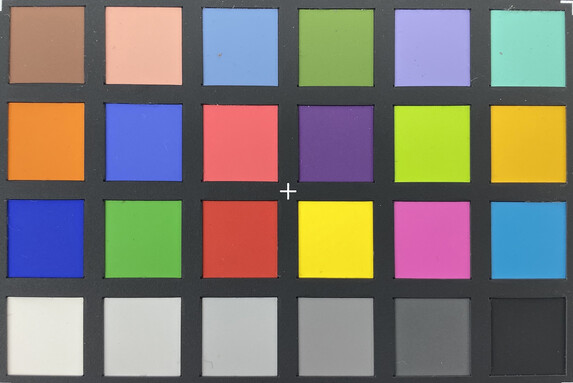
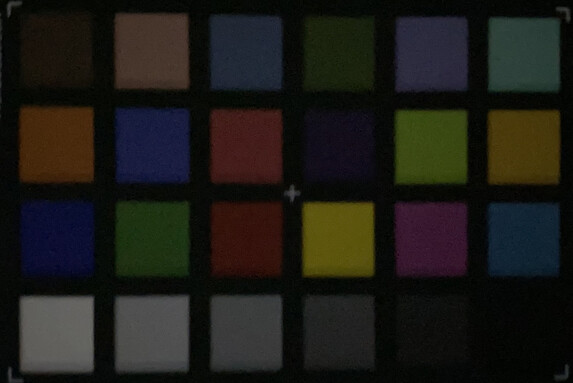
Accessories & Warranty - Still only one-year's warranty
The iPhone 11 comes with a power adapter, a Lightning to USB Type-A cable, a pair of Lightning headphones, a SIM tool, a quick-start guide and a set of stickers. Apple sells numerous covers, cases, third-party wireless chargers and a wired fast charger separately too.
The iPhone 11 comes with a one-year limited manufacturer's warranty. However, you may receive up to two years' coverage if you live in the EU, for example. Please see our Guarantees, Return Policies & Warranties FAQ for country-specific information.
Apple continues to offer its AppleCare+ service too, which still costs €229 and covers two accidental damage repairs. Even with AppleCare+, Apple charges a €29 service fee for a display replacement and €99 to repair any other damage to the device. In theory, the latter should also cover a total loss of the device too. AppleCare+ is valid for two years from the date of purchase and can be purchased up to 60 days after purchase.
Input Devices & Operation - iPhone 11 with Haptic Touch
The capacitive touchscreen with which Apple has equipped the iPhone 11 is the same as the one that it used in the iPhone XR. This is no bad thing though, as it reproduces inputs reliably, quickly and accurately onscreen. The volume and power buttons have not changed much since the iPhone X, apart from them now being a little thicker than they were previously. All three buttons have crisp and precise pressure points.
Apple has finally brought swiping to its preinstalled keyboard, but you can still switch to alternate keyboards found on the App Store should you prefer. The iPhone 11 has Haptic Touch instead of 3D Touch like the iPhone 11 Pro series models too.
Face ID returns too, and with increased recognition speeds according to Apple. The G8S ThinQ continues to have the fastest 3D facial recognition of any device that we have tested, though. Face ID now has a wider field of view too, which proved a practical upgrade in everyday use.
Display - LCD again the cheapest iPhone
The iPhone 11 has a 6.1-inch LCD panel, which resolves at 1792x828. Apple drew criticism for selling a flagship with a 324 PPI pixel density, but this remains enough in our view as the higher number of sub-pixels compared to OLED panels cushions that shortfall slightly. Apple's True Tone functionality returns too, which automatically adjusts the white balance of the display according to the ambient light in which it is situated.
Apple claims that the display covers a high percentage of the DCI P3 colour space and should achieve 625 cd/m² with a contrast ratio of 1,400: 1. This equates to a decent black level of 0.44 cd/m² by our calculations. However, our tests did not completely confirm these claims. The good news is that our test device gets even brighter than the iPhone XR, but it also has a much higher black value, yielding a contrast ratio of 999:1.
| |||||||||||||||||||||||||
Brightness Distribution: 93 %
Center on Battery: 679 cd/m²
Contrast: 999:1 (Black: 0.68 cd/m²)
ΔE ColorChecker Calman: 0.8 | ∀{0.5-29.43 Ø4.83}
ΔE Greyscale Calman: 1.1 | ∀{0.09-98 Ø5.1}
99.8% sRGB (Calman 2D)
Gamma: 2.24
CCT: 6610 K
| Apple iPhone 11 IPS, 1792x828, 6.1" | Apple iPhone XR IPS, 1792x828, 6.1" | Samsung Galaxy S10e AMOLED, 2280x1080, 5.8" | Huawei P30 OLED, 2340x1080, 6.1" | Xiaomi Mi 9 AMOLED, 2340x1080, 6.4" | LG G8s ThinQ P-OLED, 2248x1080, 6.2" | |
|---|---|---|---|---|---|---|
| Screen | -5% | -57% | -31% | -10% | -118% | |
| Brightness middle | 679 | 672 -1% | 426 -37% | 561 -17% | 593 -13% | 539 -21% |
| Brightness | 671 | 641 -4% | 427 -36% | 560 -17% | 587 -13% | 556 -17% |
| Brightness Distribution | 93 | 92 -1% | 96 3% | 95 2% | 94 1% | 88 -5% |
| Black Level * | 0.68 | 0.35 49% | ||||
| Contrast | 999 | 1920 92% | ||||
| Colorchecker dE 2000 * | 0.8 | 1.3 -63% | 2.14 -168% | 1.5 -88% | 0.9 -13% | 3.78 -373% |
| Colorchecker dE 2000 max. * | 2.4 | 2.7 -13% | 3.29 -37% | 2.5 -4% | 2 17% | 6.95 -190% |
| Greyscale dE 2000 * | 1.1 | 2.2 -100% | 1.8 -64% | 1.8 -64% | 1.5 -36% | 2.2 -100% |
| Gamma | 2.24 98% | 2.3 96% | 2.111 104% | 2.2 100% | 2.27 97% | 2.274 97% |
| CCT | 6610 98% | 6868 95% | 6329 103% | 6512 100% | 6548 99% | 6013 108% |
* ... smaller is better
Screen Flickering / PWM (Pulse-Width Modulation)
| Screen flickering / PWM not detected | |||
In comparison: 53 % of all tested devices do not use PWM to dim the display. If PWM was detected, an average of 8320 (minimum: 5 - maximum: 343500) Hz was measured. | |||
We also checked the colour accuracy of the display using a photo spectrometer and CalMAN software. The iPhone 11 delivers even better values than its Pro siblings with True Tone disabled. We do find the warmer look that True Tone gives the display more pleasant in daily use though.
Display Response Times
| ↔ Response Time Black to White | ||
|---|---|---|
| 20.4 ms ... rise ↗ and fall ↘ combined | ↗ 7.2 ms rise | |
| ↘ 13.2 ms fall | ||
| The screen shows good response rates in our tests, but may be too slow for competitive gamers. In comparison, all tested devices range from 0.1 (minimum) to 240 (maximum) ms. » 43 % of all devices are better. This means that the measured response time is similar to the average of all tested devices (20.5 ms). | ||
| ↔ Response Time 50% Grey to 80% Grey | ||
| 29.2 ms ... rise ↗ and fall ↘ combined | ↗ 13.2 ms rise | |
| ↘ 26 ms fall | ||
| The screen shows relatively slow response rates in our tests and may be too slow for gamers. In comparison, all tested devices range from 0.165 (minimum) to 636 (maximum) ms. » 37 % of all devices are better. This means that the measured response time is similar to the average of all tested devices (32 ms). | ||
Performance - A13 Bionic = peak performance
The iPhone 11 comes with an A13 Bionic SoC, just like the iPhone 11 Pro series does. The hexa-core SoC features two performance cores and four power-saving cores, which Apple complements with 4 GB of RAM. The SoC also integrates an A13 Bionic GPU and has 8.5 billion transistors on a 7 nm EUV process that TSMC manufactures.
The A13 Bionic performed excellently during our tests but only until it gets hot, just like the iPhone 11 Pro. Our review unit throttles performance so much to prevent it from overheating that 3DMark Sling Shot crashed until the device had cooled down. You should experience no such issues in daily use, but it is something worth keeping in mind, nonetheless. Incidentally, while all three devices have the same SoC, the iPhone 11 has a lower resolution display, which requires fewer resources to power than the panels in the iPhone 11 Pro series. Hence, the iPhone 11 should theoretically perform better in games than its more expensive siblings.
| AnTuTu v7 - Total Score (sort by value) | |
| Apple iPhone 11 | |
| Samsung Galaxy S10e | |
| Huawei P30 | |
| LG G8s ThinQ | |
| Xiaomi Mi 9 | |
| Apple iPad Pro 11 2018 | |
| Average Apple A13 Bionic (456891 - 462516, n=3) | |
We have no complaints with browser performance either. The iPhone 11 performed excellently in synthetic benchmarks, as it does in real-world use too.
| Jetstream 2 - 2.0 Total Score | |
| Average of class Smartphone (13.8 - 387, n=154, last 2 years) | |
| Average Apple A13 Bionic (128.5 - 142.2, n=5) | |
| Apple iPhone 11 (Safari Mobile 13.0) | |
| Xiaomi Mi 9 (Chrome 73) | |
| LG G8s ThinQ (Chrome 75) | |
| Huawei P30 (Chrome 73) | |
| JetStream 1.1 - Total Score | |
| Apple iPhone 11 (Safari Mobile 13.0) | |
| Average Apple A13 Bionic (279 - 302, n=5) | |
| Apple iPad Pro 11 2018 (Safari 13) | |
| Apple iPhone XR (Safari Mobile 12.0) | |
| Xiaomi Mi 9 (Chrome 73.0.3683.75) | |
| Huawei P30 (Chrome 73) | |
| LG G8s ThinQ (Chrome 75) | |
| Speedometer 2.0 - Result | |
| Average of class Smartphone (15.2 - 585, n=137, last 2 years) | |
| Average Apple A13 Bionic (153 - 171, n=5) | |
| Apple iPhone 11 (Safari Mobile 13.0) | |
| Apple iPad Pro 11 2018 (IOS 12.1.1) | |
| Xiaomi Mi 9 (Chrome 73.0.3683.75) | |
| LG G8s ThinQ (Chome 75) | |
| Huawei P30 (Chrome 73) | |
| WebXPRT 3 - Overall | |
| Apple iPhone 11 (Safari Mobile 13.0) | |
| Average Apple A13 Bionic (146 - 202, n=5) | |
| Apple iPad Pro 11 2018 (Safari 13) | |
| Average of class Smartphone (38 - 347, n=55, last 2 years) | |
| Apple iPhone XR (Safari Mobile 12.0) | |
| Xiaomi Mi 9 (Chrome 73.0.3683.75) | |
| LG G8s ThinQ (Chrome 75) | |
| Huawei P30 (Chrome 73) | |
| Octane V2 - Total Score | |
| Apple iPhone 11 (Safari Mobile 13.0) | |
| Average Apple A13 Bionic (47288 - 49388, n=5) | |
| Average of class Smartphone (2228 - 100368, n=204, last 2 years) | |
| Apple iPad Pro 11 2018 (Safari 13) | |
| Apple iPhone XR (Safari Mobile 12.0) | |
| Xiaomi Mi 9 (Chrome 73.0.3683.75) | |
| LG G8s ThinQ (Chrome 75) | |
| Huawei P30 (Chrome 73) | |
| Samsung Galaxy S10e (Chrome 73) | |
| Mozilla Kraken 1.1 - Total | |
| Samsung Galaxy S10e (Chrome 73) | |
| Huawei P30 (Chrome 73) | |
| LG G8s ThinQ (Chrome 75) | |
| Xiaomi Mi 9 (Chrome 73.0.3683.75) | |
| Average of class Smartphone (277 - 28190, n=158, last 2 years) | |
| Apple iPhone XR (Safari Mobile 12.0) | |
| Apple iPad Pro 11 2018 (Safari 13) | |
| Apple iPhone 11 (Safari Mobile 13.0) | |
| Average Apple A13 Bionic (545 - 573, n=5) | |
* ... smaller is better
Games - Strong gaming performance
The iPhone 11, like the iPhone XR was with its iPhone XS siblings, has nominally better gaming performance than the iPhone 11 Pro and iPhone 11 Pro Max. We did not detect any graphical artefacts or glitches during our gaming tests as we did when testing the iPhone 11 Pro. Our review unit also maintained impeccable refresh rates throughout our gaming tests too.
The iPhone 11 also fits nicely in our hands and is not too heavy, making it an excellent gaming smartphone. The device has a fast touchscreen and decent-sounding speakers as well.
PUBG Mobile
Asphalt 9
Emissions - Moderate speakers and a hot power supply
Temperature
The iPhone 11 runs comparatively hot even at idle, as it does when charging. We could not detect the latter when holding our review unit in our hands, though. Surface temperatures reach nearly 42 °C under load too. However, this is not critical levels, so it should never feel too hot to hold.
We also ran GFXBench battery tests on a loop to see how the A13 Bionic performed under sustained load. Unlike the iPhone 11 Pro, the iPhone 11 had no issues with either the T-Rex or Manhattan benchmarks. Hence, you should experience no throttling even during prolonged gaming sessions.
(±) The maximum temperature on the upper side is 41.7 °C / 107 F, compared to the average of 35.2 °C / 95 F, ranging from 21.9 to 247 °C for the class Smartphone.
(+) The bottom heats up to a maximum of 39.1 °C / 102 F, compared to the average of 34 °C / 93 F
(±) In idle usage, the average temperature for the upper side is 33.7 °C / 93 F, compared to the device average of 32.9 °C / 91 F.
Speakers
Stereo speakers are not a guarantee for good sound, which Apple demonstrates handsomely with the iPhone 11. The ones in our review unit sound passable at medium volume, but they begin to distort at higher volumes. Our measurements confirm this too.
Hence, we would recommend using external audio equipment where possible. The included headphones are solid companions at best, but they will not blow anyone away. Sadly, Apple continues to fail to include a Lightning to headphone jack adapter in the box.
You can always use Bluetooth audio equipment instead, with the iPhone 11 Pro supporting the modern 5.0 standard. However, its audio codec support is rather thin, as Apple only includes AAC by way of high-resolution codecs. While this is good enough for streaming music from Apple Music, AAC cannot output as much data as codecs like aptX HD or LDAC can.
Apple iPhone 11 audio analysis
(+) | speakers can play relatively loud (83.4 dB)
Bass 100 - 315 Hz
(±) | reduced bass - on average 13.5% lower than median
(±) | linearity of bass is average (13.6% delta to prev. frequency)
Mids 400 - 2000 Hz
(±) | higher mids - on average 5.3% higher than median
(+) | mids are linear (5.4% delta to prev. frequency)
Highs 2 - 16 kHz
(±) | higher highs - on average 10.3% higher than median
(+) | highs are linear (4.6% delta to prev. frequency)
Overall 100 - 16.000 Hz
(±) | linearity of overall sound is average (21.4% difference to median)
Compared to same class
» 40% of all tested devices in this class were better, 8% similar, 52% worse
» The best had a delta of 12%, average was 36%, worst was 134%
Compared to all devices tested
» 58% of all tested devices were better, 7% similar, 35% worse
» The best had a delta of 4%, average was 24%, worst was 134%
Samsung Galaxy S10e audio analysis
(+) | speakers can play relatively loud (83 dB)
Bass 100 - 315 Hz
(-) | nearly no bass - on average 69.2% lower than median
(+) | bass is linear (0% delta to prev. frequency)
Mids 400 - 2000 Hz
(-) | nearly no mids - on average 69.2% lower than median
(+) | mids are linear (0% delta to prev. frequency)
Highs 2 - 16 kHz
(-) | nearly no highs - on average 69.2% lower than median
(+) | highs are linear (0% delta to prev. frequency)
Overall 100 - 16.000 Hz
(-) | overall sound is not linear (121.7% difference to median)
Compared to same class
» 90% of all tested devices in this class were better, 8% similar, 2% worse
» The best had a delta of 12%, average was 36%, worst was 134%
Compared to all devices tested
» 97% of all tested devices were better, 2% similar, 1% worse
» The best had a delta of 4%, average was 24%, worst was 134%
Power Management - A small boost without any benefits?
Power Consumption
The iPhone 11 consumes slightly less power than its predecessor overall. However, it idles a higher draw at maximum luminosity, but only because it can reach peak manual brightness, unlike the iPhone XR.
While the device supports wireless charging like its iPhone 11 Pro siblings, the lack of fast charging is a major drawback in our opinion. Apple includes a 5 W charger in the box rather than an 18 W one as it does with the iPhone 11 Pro and iPhone 11 Pro Max, which is cheap considering how much the iPhone 11 costs. Our review unit takes about 3:30 hours to reach full charge with the included charger. Worse still, the iPhone 11 loses charge when it is connected to the mains with its bundled charger.
| Off / Standby | |
| Idle | |
| Load |
|
Key:
min: | |
| Apple iPhone 11 3110 mAh | Apple iPhone XR 2942 mAh | Samsung Galaxy S10e 3100 mAh | Huawei P30 3650 mAh | LG G8s ThinQ 3550 mAh | Xiaomi Mi 9 3300 mAh | Average Apple A13 Bionic | Average of class Smartphone | |
|---|---|---|---|---|---|---|---|---|
| Power Consumption | 1% | -2% | -2% | -28% | 7% | -19% | -25% | |
| Idle Minimum * | 0.56 | 0.61 -9% | 0.6 -7% | 0.69 -23% | 1.2 -114% | 0.67 -20% | 0.76 ? -36% | 0.868 ? -55% |
| Idle Average * | 2.99 | 2.67 11% | 1.2 60% | 2.41 19% | 1.6 46% | 1.26 58% | 3.39 ? -13% | 1.426 ? 52% |
| Idle Maximum * | 3.02 | 2.69 11% | 1.5 50% | 2.51 17% | 2 34% | 1.29 57% | 3.44 ? -14% | 1.588 ? 47% |
| Load Average * | 4.17 | 4.34 -4% | 5.2 -25% | 3.86 7% | 5 -20% | 3.71 11% | 4.66 ? -12% | 7.17 ? -72% |
| Load Maximum * | 5.44 | 5.66 -4% | 10.2 -88% | 6.96 -28% | 10 -84% | 9.3 -71% | 6.42 ? -18% | 10.8 ? -99% |
* ... smaller is better
Battery Life
Apple has equipped the iPhone 11 with a 168-mAh larger battery than the one it included in the iPhone XR. However, our review unit cannot consistently convert this additional capacity into longer runtimes, except in our looped video tests. We suspect that Apple will improve this with a software update. Despite this, the iPhone 11 still sits atop our battery comparison table.
| Apple iPhone 11 3110 mAh | Apple iPhone XR 2942 mAh | Samsung Galaxy S10e 3100 mAh | Huawei P30 3650 mAh | LG G8s ThinQ 3550 mAh | Xiaomi Mi 9 3300 mAh | |
|---|---|---|---|---|---|---|
| Battery Runtime | 0% | -45% | -20% | -29% | -29% | |
| Reader / Idle | 2765 | 2969 7% | 1185 -57% | 1914 -31% | 1689 -39% | 1650 -40% |
| H.264 | 1147 | 1011 -12% | 795 -31% | 1050 -8% | 753 -34% | 1008 -12% |
| WiFi v1.3 | 866 | 910 5% | 416 -52% | 715 -17% | 693 -20% | 546 -37% |
| Load | 267 | 270 1% | 164 -39% | 208 -22% | 203 -24% | 194 -27% |
Pros
Cons
Verdict - A gentle facelift
The things that distinguish the iPhone 11 from the iPhone XR are its dual rear-facing cameras and lower price. Otherwise, hardly anything has changed from between generations, and the A13 Bionic chip improves upon what was already an excellent SoC anyway.
Given how much the iPhone 11 costs, we think Apple could have equipped it with a better-quality display. The LCD panel and lower resolution have their benefits, but the worse black value than its predecessor is disappointing.
Apple has made a colourful return with the iPhone 11. The somewhat chunky smartphone has a decent set of dual rear-facing cameras and fantastic battery life, but you must be prepared to compromise on some areas compared to the iPhone 11 Pro and iPhone 11 Pro Max.
Furthermore, the included charger is dismally underpowered, to the extent that our review unit discharges when charging but also in use. The iPhone 11 has surprisingly poor location accuracy too, and its speakers did not win us over either.
Overall, the iPhone 11 is certainly a good smartphone and represents a relatively cheap entry into the Apple ecosystem, but it does not offer as good value for money as other comparable smartphones out there.
Apple iPhone 11
- 09/30/2019 v7 (old)
Daniel Schmidt




